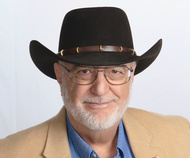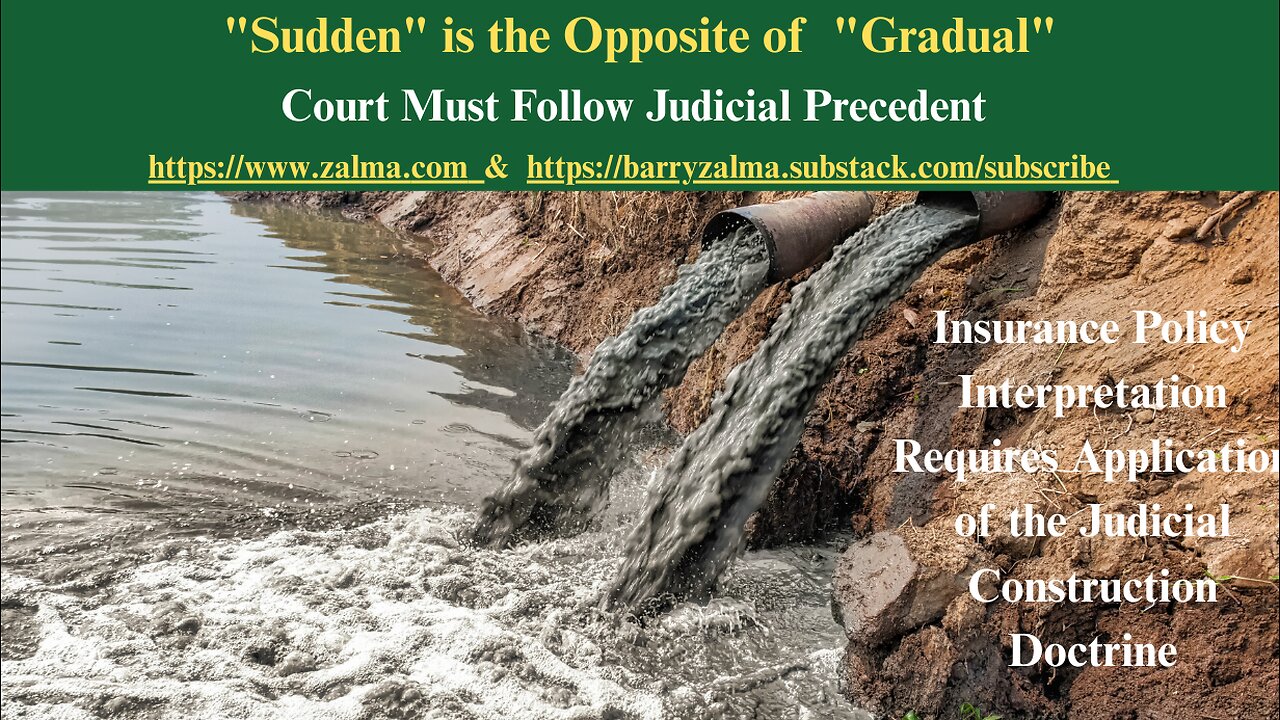
Employers’ Liability Policy Only Covers Accidental Injury
Barry Zalma
May 18, 2023
Read the full article at https://lnkd.in/gkU-JPVX, see the full video at https://lnkd.in/ghXKKXGq and at https://lnkd.in/ghaNiF7c and at https://zalma.com/blog plus more than 4500 posts.
In Graphic Packaging International, LLC v. Everest National Insurance Company, No. N22C-03-192 AML CCLD, Superior Court of Delaware (May 8, 2023) the plaintiff sought coverage under an employers’ liability insurance policy for losses the plaintiff incurred litigating and settling a workplace injury action filed by its employee.
The insurance policy provided coverage only for “bodily injury by accident.” In the underlying litigation, the employer faced a claim that it knowingly engaged in conduct that was substantially certain to injure its employee. The employer settled the underlying litigation shortly before trial, and the insurance company denied coverage for the settlement on the basis that the litigation involved a claim for intentional tortious conduct, rather than a claim for an accidental injury within the scope of the policy’s coverage.
Under settled Texas law, Texas’s workers’ compensation law when the employer commits an intentional tort the exclusive remedy does not apply. Accordingly, the only claim the employee brought in the underlying litigation was that the employer’s conduct “[rose] to the level of an intentional tort.”
FACTUAL BACKGROUND
Plaintiff Graphic Packaging International (“Graphic”) or (“GPHC”) makes sustainable paper-based packaging solutions for a variety of food, beverage, food-service, and other consumer products companies. GPHC’s primary insurer, Arch Insurance Company (“Arch”), issued a Workers’ Compensation and Employers’ Liability policy to GPHC and Graphic (the “Arch Policy”). The Arch Policy contained a $1 million per occurrence limit and provided two separate coverages. In Part One, the Arch Policy insured Graphic’s obligations under state workers’ compensation laws. In Part Two, the Arch Policy insured Graphic for employee injury claims outside of workers’ compensation.
Everest National Insurance Company (“Everest”) provided a Commercial Umbrella Liability Policy to GPHC and its subsidiaries, including Graphic (the “Everest Policy”). The Everest Policy contained a $25 million per occurrence coverage limit in excess of the Arch Policy.
The Arch Policy (which Everest followed) excluded coverage for “bodily injury intentionally caused or aggravated by [Graphic].”
The Crompton Action
Montgomery Crompton (“Mr. Crompton”), a Graphic employee, sustained an injury while working at a Graphic paper mill in Texas. During steam production, it was important that a sudden intense release of steam, known as a “blowdown,” occur. In July 2018, a hole developed in the blowdown header, requiring placement of a temporary steel patch until the mill could be shut down for repairs. Graphic knew the safest way to repair the blowdown header was to shut down the production process, but Graphic instead ordered Mr. Crompton to manually perform the steel patch.
When Mr. Crompton started the repair he noticed hot water leaking from the hole in the header and told his supervisor he was concerned for his safety. Mr. Crompton returned to the blowdown header, and while he was working on the steel patch, a blowdown occurred, covering him in scalding steam that severely burned him.
The Texas Workers’ Compensation Act (“TWCA”) controls the relationship and conduct between an employee who is injured in the course and scope of his employment and an employer who has workers’ compensation insurance. When an employer commits an intentional tort, a common-law exception exists to the otherwise exclusive remedy created by the TWCA.
Mr. Crompton and his wife (“The Cromptons”) sued Graphic in (the “Crompton Action”), alleging “the conduct of [Graphic] rises to the level of an intentional tort; specifically, [Graphic] had knowledge to a substantial certainty that its conduct would bring about harm to Crompton.” Arch, as Graphic’s primary insurer, defended Graphic in the Crompton Action.
Arch offered to tender its $1 million employers’ liability limit to Everest to use to attempt to settle the Crompton Action. Everest rejected Arch’s tender because Everest “continue[d] to believe that no coverage exist[ed] for any liability Graphic may face in the pending suit.”
The parties in the Crompton Action participated in a settlement conference on January 18, 2022. During that conference, the Cromptons reduced their demands, and Arch reiterated that its entire $1 million policy limit could be used by Everest and Graphic to settle the case. Everest refused to give Graphic authority to use any portion of the Everest Policy to settle the Crompton Action.
The Cromptons also accepted the mediator’s proposal, and Graphic paid the portion of the settlement in excess of Arch’s policy limit.
This Coverage Action
Graphic sued Everest for failure to cover the Crompton Action, seeking to recover the amount Graphic paid to settle the Cromptons’ claims. Everest successfully moved for judgment on the pleadings.
ANALYSIS
The Court concluded that it is clear as a matter of law that the Crompton Action did not fall within the scope of Everest’s coverage obligation. Graphic, as the insured, had the burden of proving it is entitled to coverage under the terms of the Everest Policy. The Everest Policy’s insuring agreement, incorporated from the underlying Arch Policy, states: “Bodily injury caused by intentional tortious conduct is different from bodily injury caused ‘by accident.’ Courts interpret the term ‘accident’ in an insurance policy to mean ‘an event which takes place without one’s foresight or expectation or design.’”
The controlling Texas law is that only a “substantially certain” intentional injury could have made Graphic liable in the Crompton Action. The Cromptons alleged in their complaint that Graphic knew or believed its actions would injure Mr. Crompton. That claim does not, and cannot be construed to, fall within the policy’s coverage for “bodily injury by accident.” The Cromptons could prevail only if they proved Graphic, through McCright, intended to injure Mr. Crompton. At the time of the settlement, therefore, Graphic was facing only an intentional tort claim. Intentional torts fall outside the scope of the policy’s coverage for accidental injury and therefore the Cromptons’ claim against Graphic does not fall within the Everest Policy’s scope of coverage.
ZALMA OPINION
Since the only way the Cromptons could succeed is to prove that Graphic intended to harm Mr. Crompton and, as a result, there was no possibility that Everest could owe indemnity to Graphic. Since Everest followed form with Arch Graphic should have been happy that Arch offered up its limits.
(c) 2023 Barry Zalma & ClaimSchool, Inc.
Subscribe and receive videos limited to subscribers of Excellence in Claims Handling at locals.com https://zalmaoninsurance.locals.com/subscribe.
Consider subscribing to my publications at substack at https://barryzalma.substack.com/publish/post/107007808
Go to Newsbreak.com https://www.newsbreak.com/@c/1653419?s=01
Barry Zalma, Esq., CFE, is available at http://www.zalma.com and [email protected]
Follow me on LinkedIn: www.linkedin.com/comm/mynetwork/discovery-see-all?usecase=PEOPLE_FOLLOWS&followMember=barry-zalma-esq-cfe-a6b5257
Write to Mr. Zalma at [email protected]; http://www.zalma.com; http://zalma.com/blog; daily articles are published at https://zalma.substack.com. Go to the podcast Zalma On Insurance at https://podcasters.spotify.com/pod/show/barry-zalma/support; Follow Mr. Zalma on Twitter at https://twitter.com/bzalma; Go to Barry Zalma videos at Rumble.com at https://rumble.com/c/c-262921; Go to Barry Zalma on YouTube- https://www.youtube.com/channel/UCysiZklEtxZsSF9DfC0Expg; https://creators.newsbreak.com/home/content/post; Go to the Insurance Claims Library – https://zalma.com/blog/insurance-claims-library.
Subscribe to Excellence in Claims Handling at locals.com https://lnkd.in/gfFKUaTf.
Subscribing to my substack at https://lnkd.in/gcZKhG6g
Newsbreak.com https://lnkd.in/g8azKc34
Write to Mr. Zalma at [email protected]. Go to the Insurance Claims Library – https://lnkd.in/gWVSBde.
Go to the podcast at https://lnkd.in/gSwXaUhz; Go to Barry Zalma videos at Rumble.com at https://lnkd.in/gV9QJYH; and YouTube- https://lnkd.in/g2hGv88.
Montana County Attorney Admits to Insurance Fraud & Is Only Suspended from Practice for 60 Days
Post 5251
Read the full article at https://lnkd.in/gnBaCjmv, see the video at https://lnkd.in/gfpVsyAd and at https://lnkd.in/gC73Nd8z, and at https://zalma.com/blog plus more than 5250 posts.
A Lawyer Who Commits Insurance Fraud and Pleas to a Lower Charge Only Suspended
In The Matter Of: Naomi R. Leisz, Attorney at Law, No. PR 25-0150, Supreme Court of Montana (December 23, 2025) the Montana Office of Disciplinary Counsel (ODC) filed a formal disciplinary complaint with the Commission on Practice (Commission) against Montana attorney Naomi R. Leisz.
On September 25, 2025, Leisz tendered a conditional admission and affidavit of consent. Leisz acknowledged the material facts of the complaint were true and she had violated the Montana Rules of Professional Conduct as alleged by ODC.
ADMISSIONS
Leisz admitted that in April 2022, her minor son was involved in a car accident in which he hit a power pole. Leisz’s son ...
Montana County Attorney Admits to Insurance Fraud & Is Only Suspended from Practice for 60 Days
Post 5251
Read the full article at https://lnkd.in/gnBaCjmv, see the video at https://lnkd.in/gfpVsyAd and at https://lnkd.in/gC73Nd8z, and at https://zalma.com/blog plus more than 5250 posts.
A Lawyer Who Commits Insurance Fraud and Pleas to a Lower Charge Only Suspended
In The Matter Of: Naomi R. Leisz, Attorney at Law, No. PR 25-0150, Supreme Court of Montana (December 23, 2025) the Montana Office of Disciplinary Counsel (ODC) filed a formal disciplinary complaint with the Commission on Practice (Commission) against Montana attorney Naomi R. Leisz.
On September 25, 2025, Leisz tendered a conditional admission and affidavit of consent. Leisz acknowledged the material facts of the complaint were true and she had violated the Montana Rules of Professional Conduct as alleged by ODC.
ADMISSIONS
Leisz admitted that in April 2022, her minor son was involved in a car accident in which he hit a power pole. Leisz’s son ...
Insurer’s Exclusion for Claims of Assault & Battery is Effective
Post 5250
Read the full article at https://lnkd.in/gBzt2vw9, see the video at https://lnkd.in/gEBBE-e6 and at https://lnkd.in/gk7EcVn9, and at https://zalma.com/blog plus more than 5250 posts.
Bar Fight With Security is an Excluded Assault & Battery
In The Cincinnati Specialty Underwriters Insurance Company v. Mainline Private Security, LLC, et al., Civil Action No. 24-3871, United States District Court, E.D. Pennsylvania (December 16, 2025) two violent attacks occurred in Philadelphia involving young men, Eric Pope (who died) and Rishabh Abhyankar (who suffered catastrophic injuries). Both incidents involved security guards provided by Mainline Private Security, LLC (“Mainline”) at local bars. The estates of the victims sued the attackers, the bars, and Mainline for negligence and assault/battery. The insurer exhausted a special limit and then denied defense or indemnity to Mainline Private Security.
INSURANCE COVERAGE
Mainline had purchased a commercial ...
Court Must Follow Judicial Precedent
Post 5252
Read the full article at https://www.linkedin.com/pulse/sudden-opposite-gradual-barry-zalma-esq-cfe-h7qmc, see the video at and at and at https://zalma.com/blog plus more than 5250 posts.
Insurance Policy Interpretation Requires Application of the Judicial Construction Doctrine
In Montrose Chemical Corporation Of California v. The Superior Court Of Los Angeles County, Canadian Universal Insurance Company, Inc., et al., B335073, Court of Appeal, 337 Cal.Rptr.3d 222 (9/30/2025) the Court of Appeal refused to allow extrinsic evidence to interpret the word “sudden” in qualified pollution exclusions (QPEs) as including gradual but unexpected pollution. The court held that, under controlling California appellate precedent, the term “sudden” in these standard-form exclusions unambiguously includes a temporal element (abruptness) and cannot reasonably be construed to mean ...


Lack of Jurisdiction Defeats Suit for Defamation
Post 5250
Posted on December 29, 2025 by Barry Zalma
See the video at and at
He Who Represents Himself in a Lawsuit has a Fool for a Client
In Pankaj Merchia v. United Healthcare Services, Inc., Civil Action No. 24-2700 (RC), United States District Court, District of Columbia (December 22, 2025)
FACTUAL BACKGROUND
Parties & Claims:
The plaintiff, Pankaj Merchia, is a physician, scientist, engineer, and entrepreneur, proceeding pro se. Merchia sued United Healthcare Services, Inc., a Minnesota-based medical insurance company, for defamation and related claims. The core allegation is that United Healthcare falsely accused Merchia of healthcare fraud, which led to his indictment and arrest in Massachusetts, causing reputational and business harm in the District of Columbia and nationwide.
Underlying Events:
The alleged defamation occurred when United ...


Zalma’s Insurance Fraud Letter
Read the full article at https://lnkd.in/dG829BF6; see the video at https://lnkd.in/dyCggZMZ and at https://lnkd.in/d6a9QdDd.
ZIFL Volume 29, Issue 24
Subscribe to the e-mail Version of ZIFL, it’s Free! https://visitor.r20.constantcontact.com/manage/optin?v=001Gb86hroKqEYVdo-PWnMUkcitKvwMc3HNWiyrn6jw8ERzpnmgU_oNjTrm1U1YGZ7_ay4AZ7_mCLQBKsXokYWFyD_Xo_zMFYUMovVTCgTAs7liC1eR4LsDBrk2zBNDMBPp7Bq0VeAA-SNvk6xgrgl8dNR0BjCMTm_gE7bAycDEHwRXFAoyVjSABkXPPaG2Jb3SEvkeZXRXPDs%3D
Zalma’s Insurance Fraud Letter (ZIFL) continues its 29th year of publication dedicated to those involved in reducing the effect of insurance fraud. ZIFL is published 24 times a year by ClaimSchool and is written by Barry Zalma. It is provided FREE to anyone who visits the site at http://zalma.com/zalmas-insurance-fraud-letter-2/
Zalma’s Insurance Fraud Letter
Merry Christmas & Happy Hannukah
Read the following Articles from the December 15, 2025 issue:
Read the full 19 page issue of ZIFL at ...













